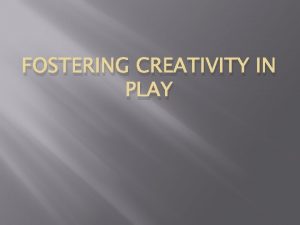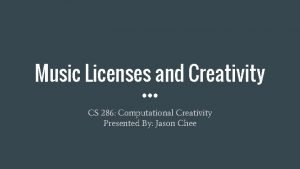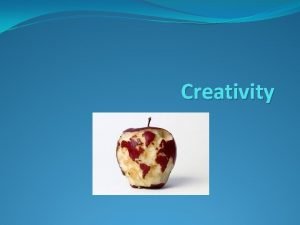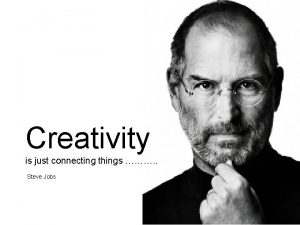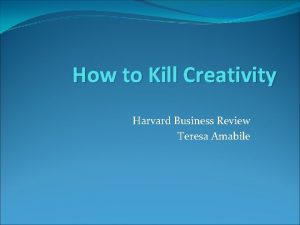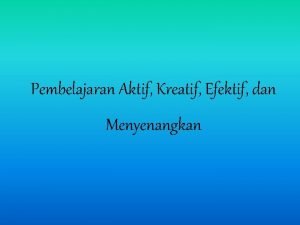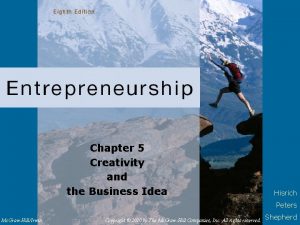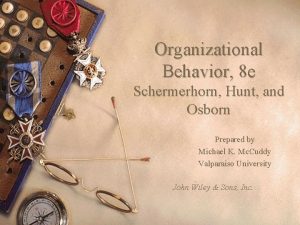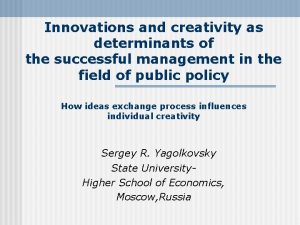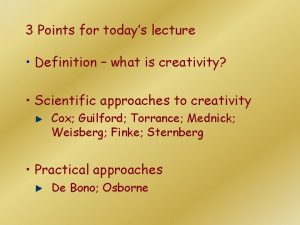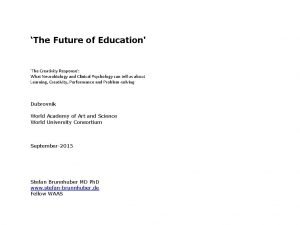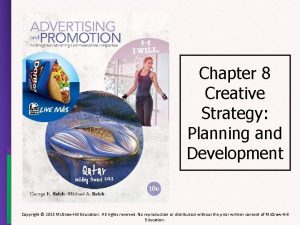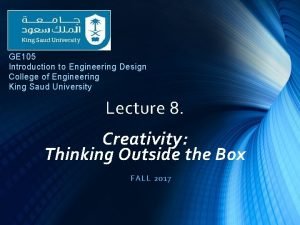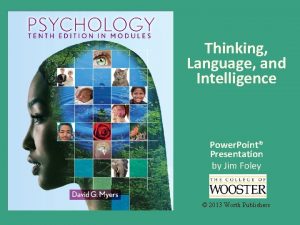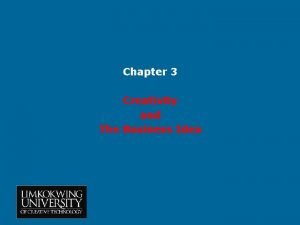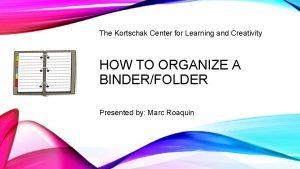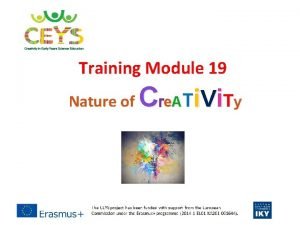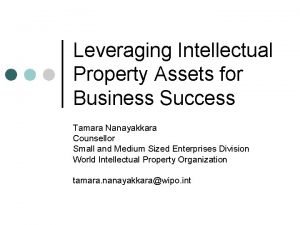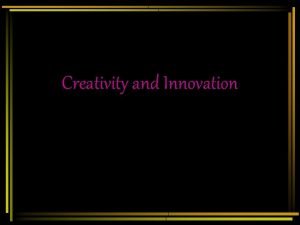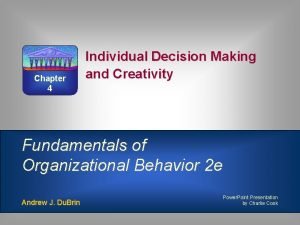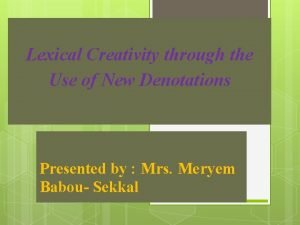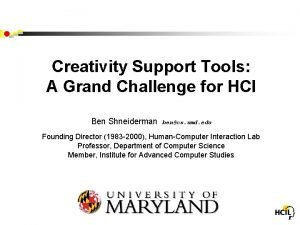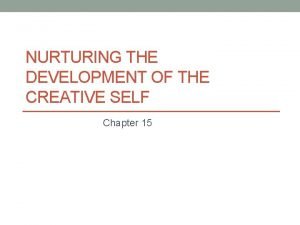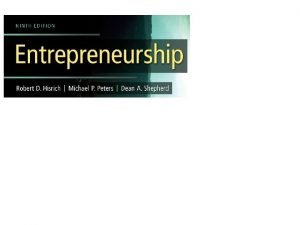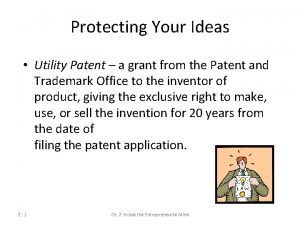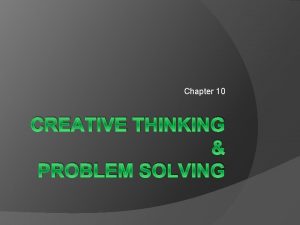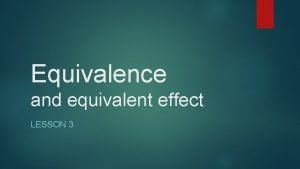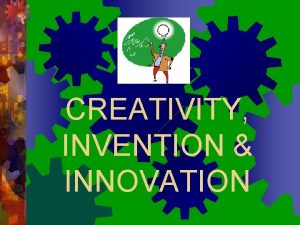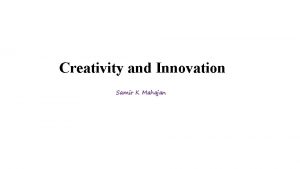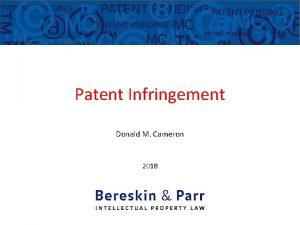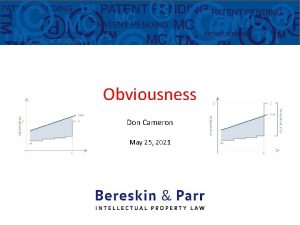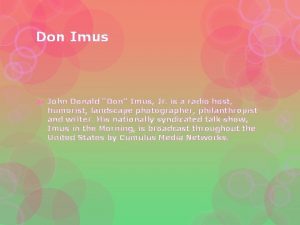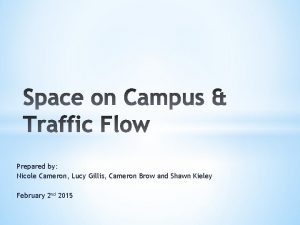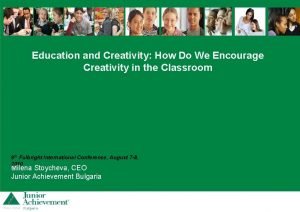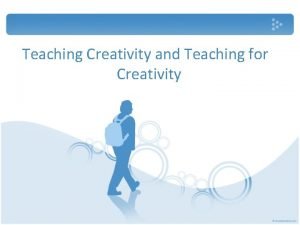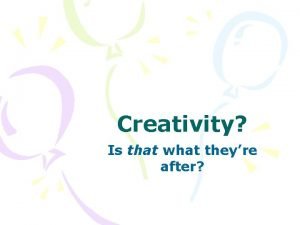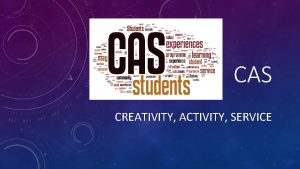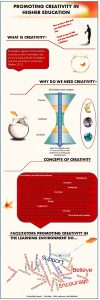On Creativity Don Cameron 2019 Donald M Cameron




























- Slides: 28

On Creativity Don Cameron 2019 Donald M. Cameron

Ideas • If trade secrets and inventions come from Ideas … • Where do Ideas come from? 2

HOW SCIENTISTS THINK/CREATE

The Scientific Method 1. 2. 3. 4. Hypothesis Make an Experiment Observe Conclude 4

Isaac Asimov “The most exciting phrase to hear in science, the one that heralds the most discoveries, is not "Eureka!" (I found it!) but 'That's funny. . . ” 5

The Scientific Method 1. 2. 3. 4. Observe Conclude Hypothesis Make an Experiment 6

Cameron’s Spin on The Scientific Meethod Hypothesis Experiment Conclusion Observation 7

The Cameron – de la Herran model exp observe ude l c n co hyp o de u l c con hyp o The “Scientific Method” spiral: • repeating the 4 steps every loop • increasing knowledge at every cycle de u l c con hyp o e observe lud c n o c 8

Richard Feynman Imagination in Science • So many of his witnesses observed the utter freedom of his flights of thought, yet when Feynman talked about his own methods he emphasized not freedom but constraints. The kind of imagination that takes blank paper, blank staves, or a blank canvas and fills it with something wholly new, wholly free -- that, Feynman contended, was not the scientist's imagination. Nor could one measure imagination as certain psychologists try to do, by displaying a picture and asking what will happen next. For Feynman the essence of the scientific imagination was a powerful and almost painful rule. What scientists create must match reality. It must match what is already known. Scientific creativity, he said, is imagination in a straitjacket. 'The whole question of imagination in science is often misunderstood by people in other disciplines, ' he said. 'They overlook the fact that whatever we are allowed to imagine in science must be consistent with everything else we know. . . ' 9

The “Immediately Possible” • What’s known? • What’s immediately possible? • What’s obvious improvement over what’s known? • What’s Inventive? what’s known – More than obvious – But still, only what’s possible 10

The sunspot analogy, cont’d • Key: – Black “umbra”: what’s old – Dark aura “penumbra”: what’s obvious – Yellow: what’s inventive – Outside the picture: what’s not “adjacently possible” (what’s impossible: can’t be done, yet) 11

The Hoverboard • Not immediately possible • Not a invention 12

CREATIVITY = PLAY 13

Brainstorming – playing with ideas • Play with friends • No idea is stupid – “Intermediate impossibles” might lead to the “good” idea • Choose the best ideas to try out/refine

3 M – “play time” 15

DON’T DO IT THE OLD WAY DO IT THE WAY OTHERS DON’T 16

The silicon gate transistor • The most common human-made object in the world

The transistor • The object is to connect the wells at will by putting a charge on the gate to open the substrate to allow current to flow • Off/on = 0/1

The problem: aligning the gate wrt the wells 19

The old way: build the wells, align the gate 20

The problem: aligning the gate 21

The new way: build the gate; the well align themselves 22

Inventiveness/Obviousness • Inventions are “inventive’ • More that what the average skilled person would do • If something is obvious, it’s not inventive. • You can’t get a patent if it’s an obvious improvement. 23

The closing door problem The Prior Art: • circa 1958 • My bedroom door would swing shut because of the hinges • Solution: put a book in front of the door – it stops closing! The classroom door: • Has a piston/spring to make it close • The room is stuffy – let’s keep the door open • We try one book – the door keeps swinging shut • What’s the obvious solution? 24

The closing door problem • The “brute force” engineering method: – If it breaks, it’s too small. So make it bigger, thicker. • So what’s an obvious way to keep the classroom door open, if one book doesn’t work? 25

Hugesson J. A. in Beloit – Would any idiot have come up with it, directly and without difficulty? "The test for obviousness is not to ask what competent inventors did or would have done to solve the problem. Inventors are by definition inventive. ” "The classical touchstone for obviousness is the technician skilled in the art but having no scintilla of inventiveness or imagination; a paragon of deduction and dexterity, wholly devoid of intuition; a triumph of the left hemisphere over the right. The question to be asked is whether this mythical creature (the man in the Clapham omnibus of patent law) would, in the light of the state of the art and of common general knowledge as at the claimed date of invention, have come directly and without difficulty to the solution taught by the patent. ” 26

Before the video … John Cleese Richard Feynman 27

On Creativity Don Cameron 2019 Donald M. Cameron
 Creativity and play fostering creativity
Creativity and play fostering creativity Taking things without asking
Taking things without asking Computational creativity market trends
Computational creativity market trends Creativity capital
Creativity capital Creativity is just connecting things
Creativity is just connecting things Harvard business review creativity
Harvard business review creativity Rule governed creativity
Rule governed creativity Pritchon is a business idea sourced from
Pritchon is a business idea sourced from Schermerhorn hunt & osborn 2003
Schermerhorn hunt & osborn 2003 Conclusion of creativity
Conclusion of creativity Confluence approach to creativity
Confluence approach to creativity Conclusion of creativity
Conclusion of creativity Determinants of creativity in advertising
Determinants of creativity in advertising Creativity innovation and invention
Creativity innovation and invention Robert sternberg five components of creativity
Robert sternberg five components of creativity Creativity business idea
Creativity business idea Usc kortschak center for learning and creativity
Usc kortschak center for learning and creativity Nature of creativity
Nature of creativity Conclusion of creativity
Conclusion of creativity Creativity innovation and invention
Creativity innovation and invention Decision making and creativity organizational behavior
Decision making and creativity organizational behavior Lexical creativity
Lexical creativity Creativity support tools
Creativity support tools What is creativity
What is creativity Chapter 4 creativity and the business idea
Chapter 4 creativity and the business idea Chakra meaning in sanskrit
Chakra meaning in sanskrit Conclusion of creativity
Conclusion of creativity Forced combination technique definition
Forced combination technique definition Complete equivalence vs creativity
Complete equivalence vs creativity
